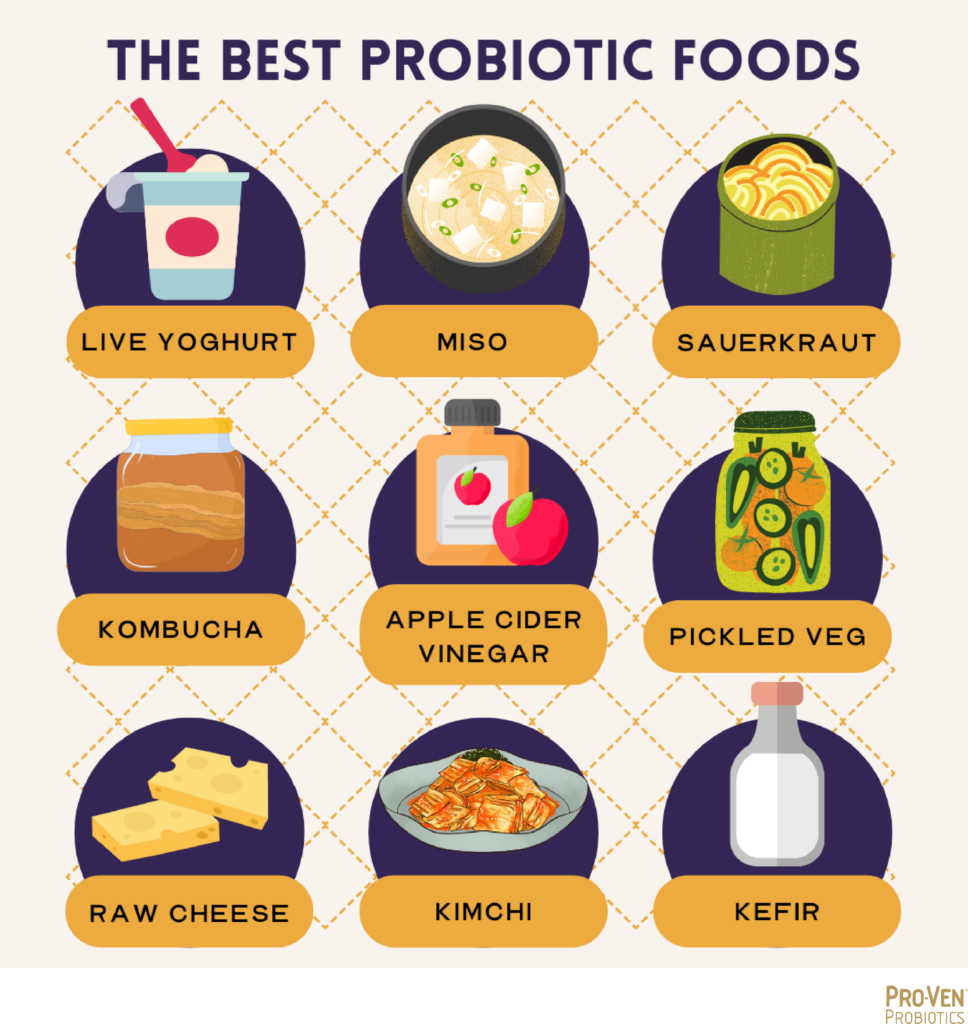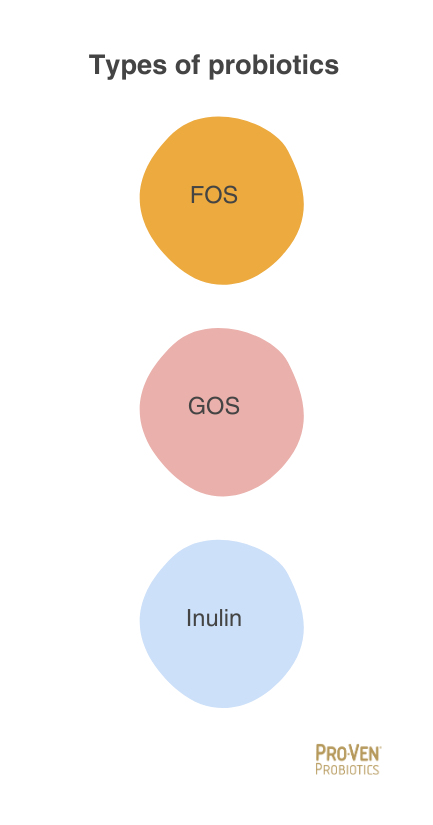- © 2018 - 2022 ProVen Probiotics. Cultech
- Contact Us
- Cookie Policy
- Privacy Policy
- Terms and Conditions
What’s the difference between probiotics and prebiotics?
This is a question that we’re often asked. With such similar sounding names, many people assume that probiotics and prebiotics are one and the same, but there is a very subtle difference between them. One refers to the beneficial gut bacteria themselves, the other is the food that they need to thrive. So… which is which?
Probiotics = friendly bacteria
Probiotics are proxies for the ‘friendly’ microorganisms – live bacteria and yeasts – that populate the digestive tract and can help support the health of the digestive system.
The gut microbiome is a highly complex and dynamic community of microorganisms, most of which are bacteria, and more than 1,000 different species/strains of bacteria have been identified with enough frequency to be considered a ‘normal’ part of the human microbiome.
The overall relationship of the microbiome to our body is both favourable and beneficial, but there are some species and strains that may have negative attributes under certain circumstances. These may potentially produce toxins and act as opportunistic pathogens. One of the primary functions of our favourable bacteria is to help exclude and/or inhibit these pathogenic species from causing harm.
Maintaining a favourable balance of all species of bacteria is key to supporting the health of the microbiome and helping to prevent overgrowth of the potentially pathogenic bacteria strains. An imbalance of bacteria is known as dysbiosis and can lead to symptoms such as bloating, gas, digestive discomfort, diarrhoea and constipation.
How can I take probiotics?
Probiotics can be taken as a supplement or through the diet. Foods that are high in probiotics include live yoghurt, sourdough bread and fermented foods such as kimchi, kefir (milk or water), sauerkraut and kombucha. Make sure you look for ‘raw’ on the label as any pasteurisation will destroy the bacteria.

By consuming a couple of spoonfuls, or half a glass each day, we can help boost the numbers of friendly bacteria in our gut. If you’re new to fermented foods but would like to give them a try, our advice is to start with just a teaspoon per day and increase the amount slowly over time.
Supplements can be helpful if you’d rather not include fermented foods in your diet. Look for a research-backed multi-strain friendly bacteria supplement that contains high numbers of commensal bacteria strains that are naturally present in the human gut.
What do prebiotics do?

If probiotics are the bacteria themselves, prebiotics are the food that they eat. There are three types – fructooligosaccharides (FOS), galactooligosaccharides (GOS) and inulin. In addition, a type of starch that is resistant to digestion in the upper part of the digestive tract, known as resistant starch, is classed as a prebiotic.
Derived from plants, FOS are carbohydrates that are indigestible to humans. As a result they pass through our digestive tract to the large intestine where they act as a food source for probiotics. FOS is derived from plants rather than lactose (see GOS below), making it a suitable prebiotic for anyone with a milk allergy.
GOS is naturally present in breast milk and is thought to help the development of the baby’s microbiome by feeding the healthy bacteria, particularly Bifidobacteria and Lactobacilli. GOS can also be derived from lactose in milk. GOS has been shown to have a prebiotic effect even at low levels, which make it particularly suitable for anyone with IBS, as taking high levels of a prebiotic may cause unwanted bloating.
Inulin is a natural polysaccharide (several simple sugars linked together) occurring in the roots and tubers of certain plants such as chicory.
Consuming these prebiotics regularly, through foods high in FOS, GOS or inulin, helps to encourage both the quantity and diversity of our microbiota.
As well as providing them with fuel, when the beneficial bacteria feed on these prebiotics, they produce by-products, such as short-chain fatty acids (SCFAs), that have been shown to benefit our health. It’s a win-win situation.
What are the best prebiotic foods?
Foods that are high in prebiotic fibre include chicory, garlic, leeks, onions, green bananas, Jerusalem artichokes and asparagus. Resistant starch can be found in cooked and cooled pasta, rice and potatoes which produces high levels of butyrate, a particular type of SCFA. If these foods don’t form a regular part of your diet, it is also possible to take a supplement containing FOS or GOS to ensure your gut bacteria are well fed.
In summary
So you can see that it’s important to include both probiotics and prebiotics (or a supplement) in your diet regularly. Probiotics and prebiotics work together to maintain the health of the gut microbiome.

Find out more about probiotics and prebiotics
Prebiotics: Definition, Types, Sources, Mechanisms, and Clinical Applications – NCBI
Probiotics and Prebiotics: What’s the difference? – Healthline
Want to know more?
ProVen Probiotics aim to provide the best support for both you and your health. If you wish to know more about gut health and staying healthy please do not hesitate to call us on 01639 825107 or alternatively, learn more via our blogs or in-depth ProVen research.

 Available from the 8th March to the 19th March on our three most popular women’s probiotics.
Available from the 8th March to the 19th March on our three most popular women’s probiotics.  Discount added automatically at checkout for you.
Discount added automatically at checkout for you. 
